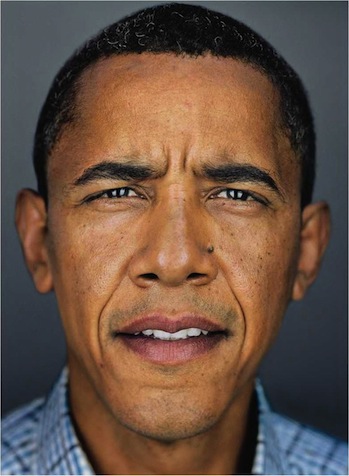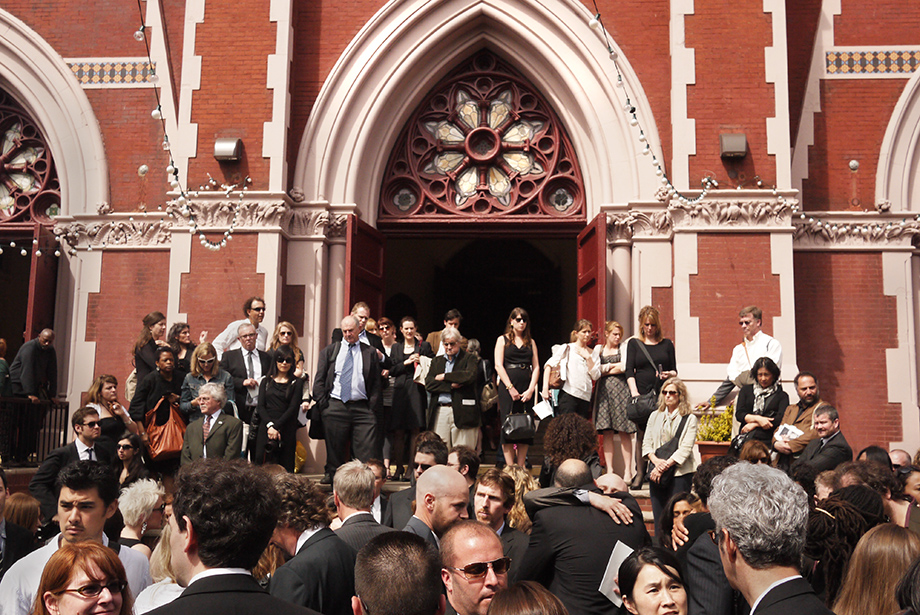Notes
Obama, the Egyptian
During my speaking trip to Northwestern a few weeks ago, I participated in a workshop with graduate Communications students about blogging images. At one point, the discussion focused on a series of photos from Palestine, one involving Palestinian protesters confronting an Israeli tank, and another involving a young Palestinian boy, yawning but holding a menacing rifle, standing in front of a mural prominently featuring a woman, a maternal figure, if I remember right, in a niqab. After discussing the way each side might politically interpret the photos, an Iranian student, sitting in on the session with a friend, helped us understand some of the particular ways Muslims and Palestinians would interpret the symbolism.
Listening to Obama’s Middle East speech yesterday, one which continues to reject American exceptionalism but argues for engagement in the Middle East on a modest, careful and case-by-basis, I was thinking along the same lines — about the domestic interpretation of the speech in marked contrast, I believe, to the profound translation Obama’s words and allusions must go through in the eyes and ears of the audience in the Middle East.
What makes this thought most acute is the follow up conversation with the student, Afsaneh, in the hallway after the session. She had a copy of the May 2nd New Yorker which she opened to the article titled “The Consequentialist” by Ryan Lizza, subtitled: “How the Arab Spring remade Obama’s foreign policy.” I remember Afsaneh, quite matter-of-factly pointing to the portrait of Obama by Martin Schoeller and asking: “You know what this photo is showing, don’t you?”
She continued:
Wearing a patterned shirt, rather than a suit-and-tie, it pictures him as humble. His skin tone? People from North African countries like Egypt, Tunisia, Libya, Algeria, and Morocco have a skin with a bi-racial tone. They often don’t have Caucasian skin like people from Iran and Turkey, yet they don’t have skin as black as other African countries. Also his face, at least capturing the crease like that, with a weather-beaten look .. as well as the “frowning eyebrows” and narrowed eyes, giving him a slight look of suspicion, but also with the semi-opened mouth humbly looking to being heard…. Don’t you see it? It portrays Obama as an Egyptian man!
In an email exchange, Afsaneh also expressed some frustration regarding Obama and Iran. She cited Lizza’s reference to Obama’s only mild support for Iran’s Green revolution in June ’09, believing, according to Lizza, that the “difference between Ahmadinejad and Mosavi in term of their actual policies were perhaps not as great as advertised.” In contrast, “as a consequentialist, Obama preferred to be on the side of idealist Egyptian youths, including Muslim Brotherhood, and apparently was inspired by them on February, 2010.”
She also cited Lizza’s point about Obama’s overly nuanced approach, the President mixing stealth, modesty as well as military strength in the Middle East and North Africa.She concluded: “I wonder how likely it is we will see the humble Obama in Tehran’s Azadi Square, like Tahrir Square, as he mentioned in his address to the Iranian people on March 2011.”
Certainly, Obama’s intentions were not translating all that clearly to Afsaneh. At the same time, however, I have to wonder — partly through natural empathy, as well as through his racial and cultural heritage, his odyssey tracing his roots and his own early years overseas — if he actually has attained some credence as “that Egyptian man.”
(photo: © Martin Schoeller for The New Yorker. Article here.)



Reactions
Comments Powered by Disqus